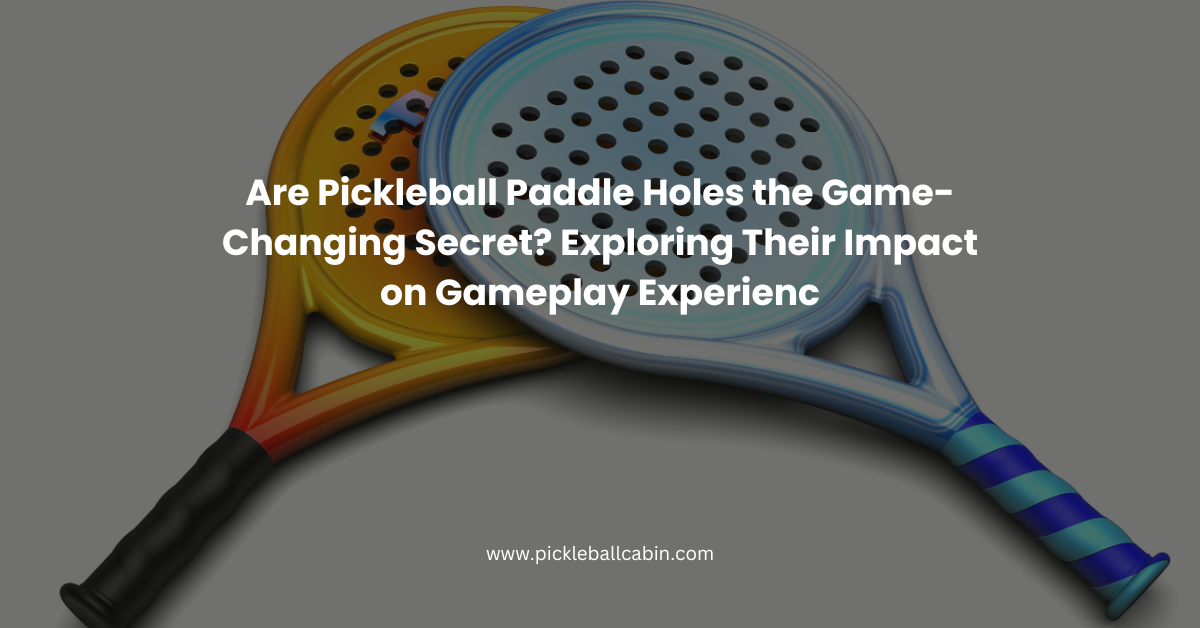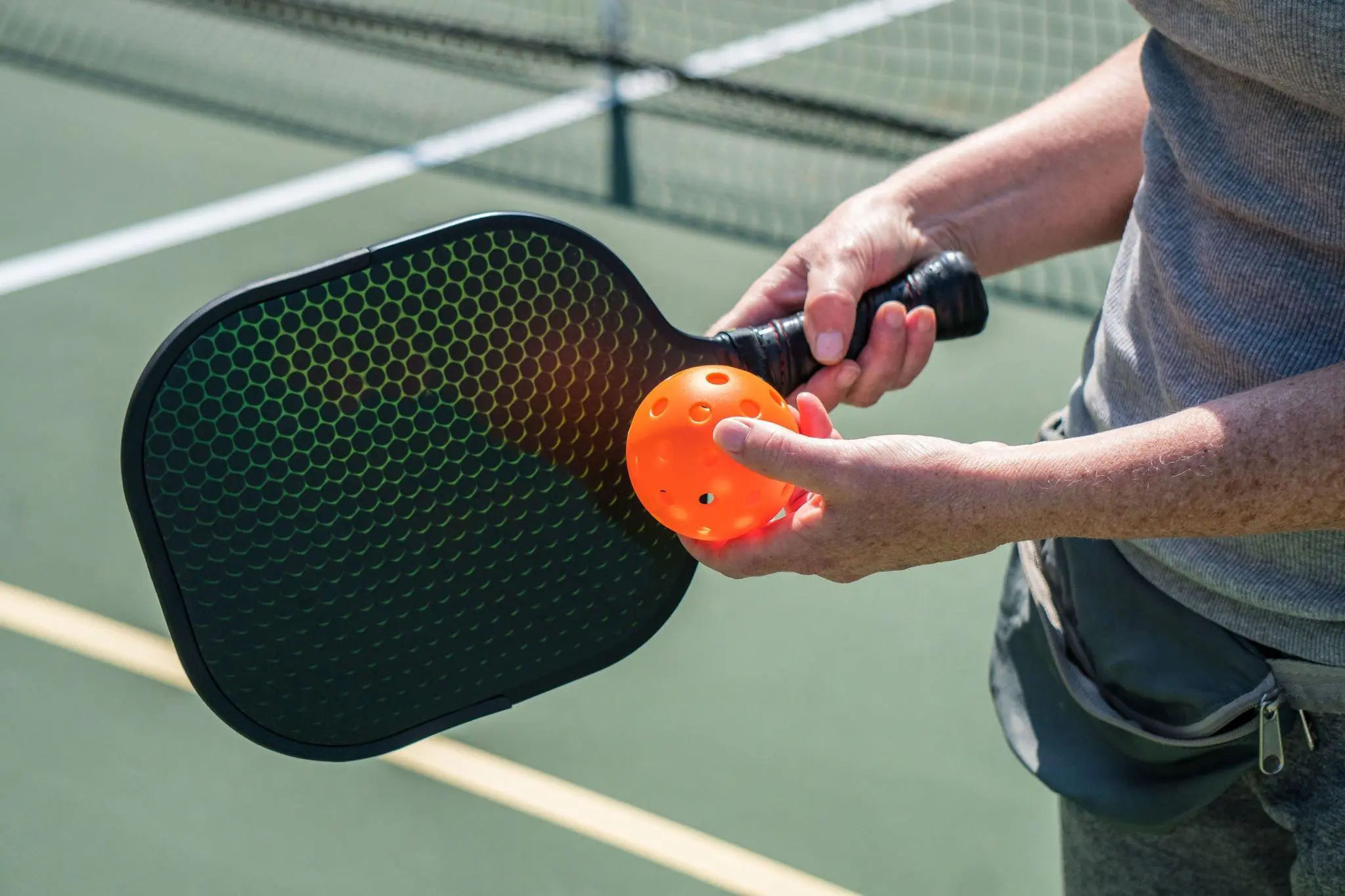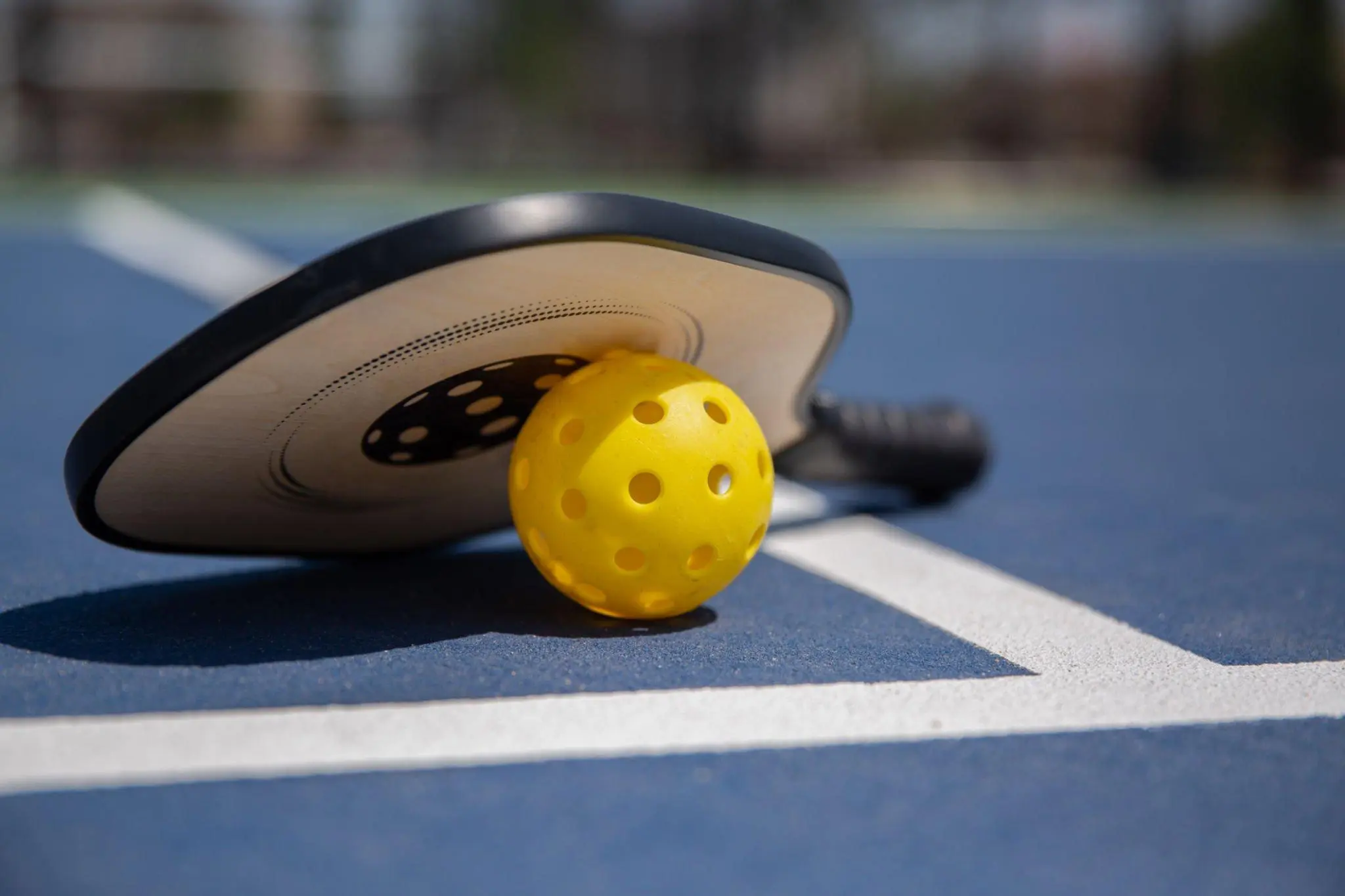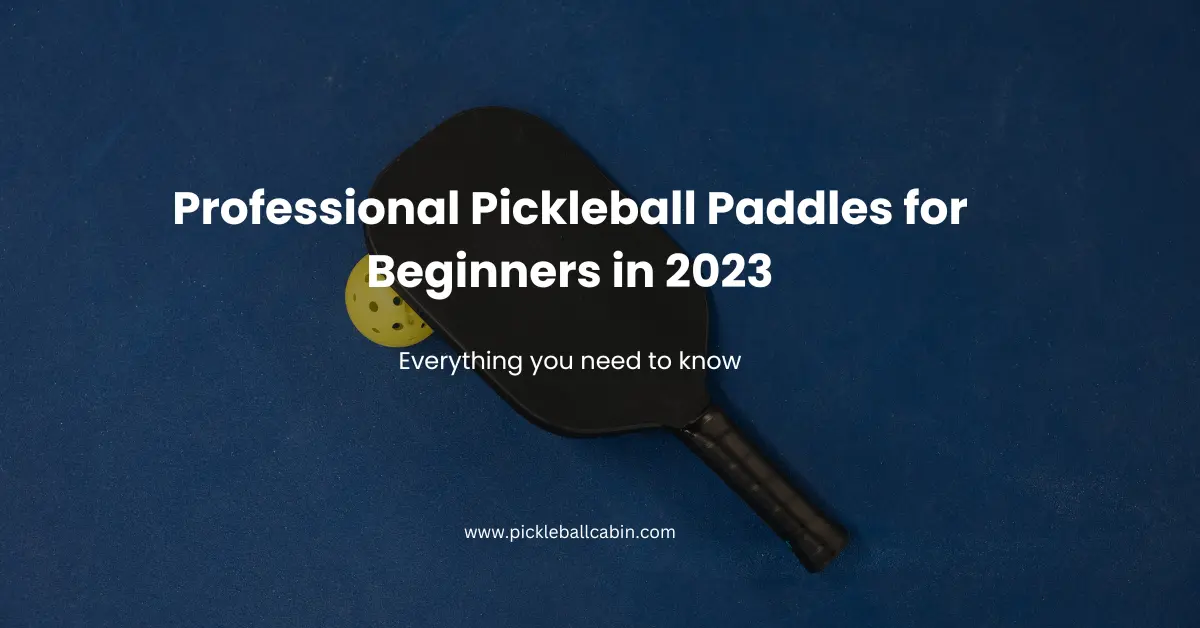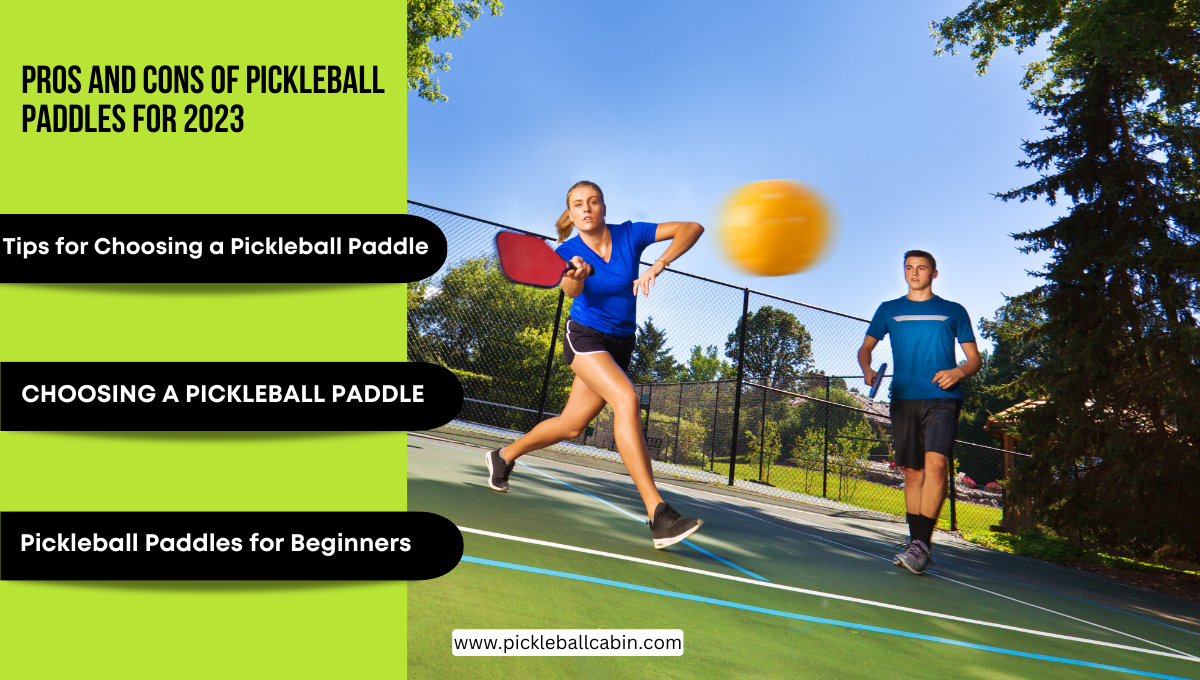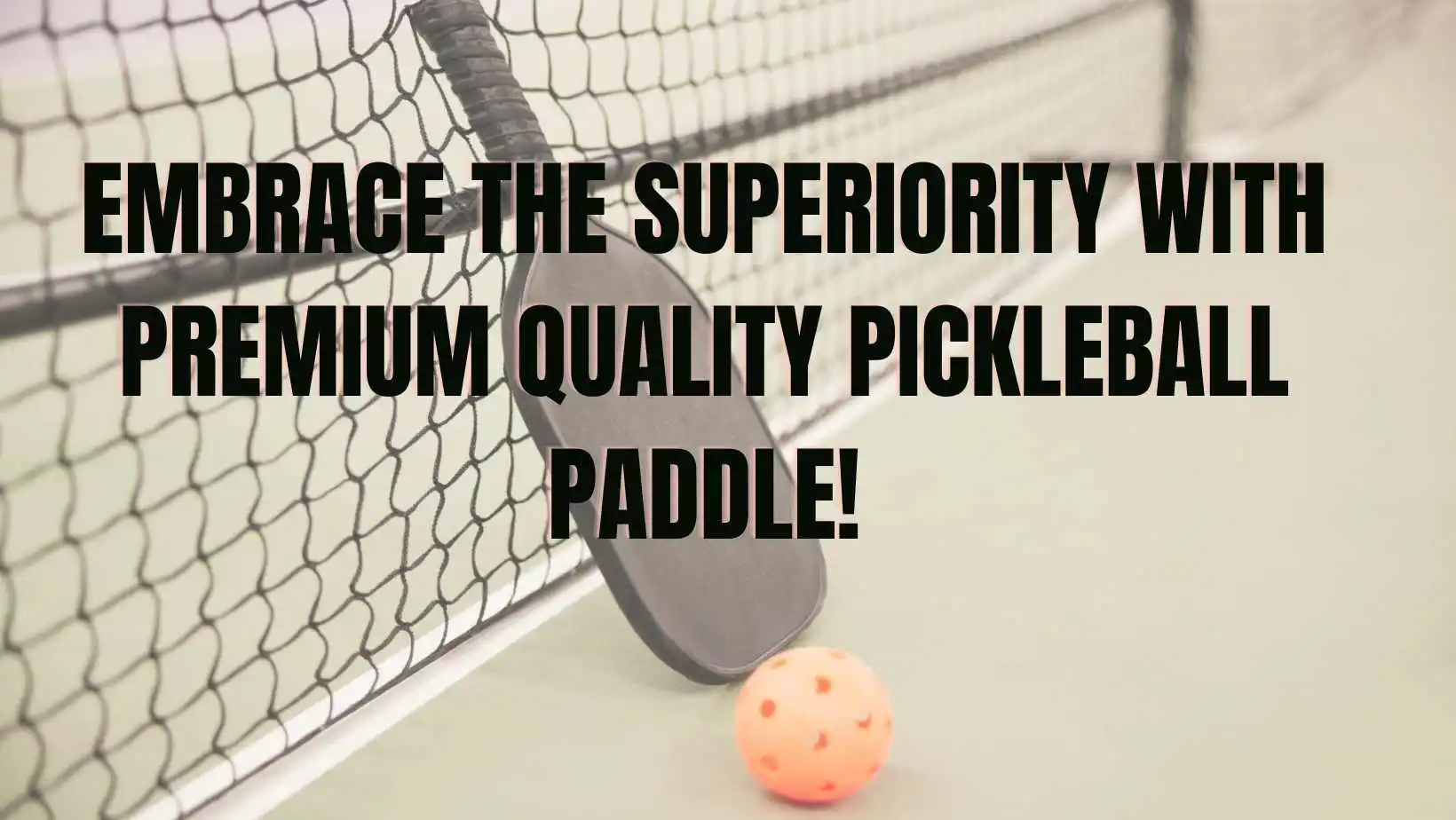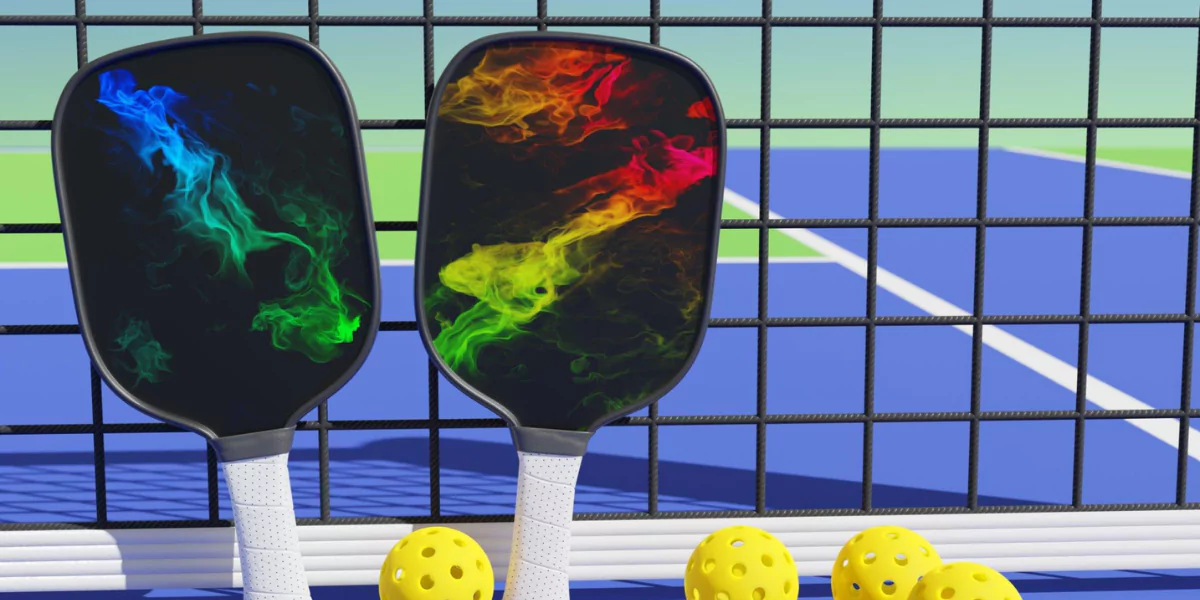Discover the hidden game-changer in pickleball– the paddle holes. Have you ever wondered how these unassuming perforations impact the gameplay experience? Join us as we unravel the mystery and explore whether the key to unlocking your full pickleball potential lies within these tiny openings.
Ready to elevate your game? Let’s dive in!
Understanding Pickleball Paddle Construction
Before delving into the topic of holes in pickleball paddles, let’s briefly understand the typical construction of these paddles. Most pickleball paddles consist of a core, face material, edge guard, handle, and grip.
The core of a pickleball paddle is usually made from materials such as polymer, aluminum, or Nomex. This core material determines the paddle’s overall weight, stiffness, and power. Polymer cores are known for providing a softer feel and better control, while aluminum cores offer more power and durability. Nomex cores, on the other hand, provide a balance between power and control.
The face material, which comes in contact with the ball, can be composed of graphite, fiberglass, or composite materials. Graphite faces are known for their lightweight and excellent control, making them a popular choice among skilled players. Fiberglass faces offer a bit more power and durability. Composite faces combine different materials to provide a balance between power, control, and durability.
The edge guard protects the paddle’s edges from damage during gameplay. It is usually made of materials like rubber or plastic, and its primary function is to prevent the paddle from getting dinged or scratched when it hits the ground or other hard surfaces.
Purpose of Holes in Pickleball Paddles
Now, let’s discuss the purpose of the holes in pickleball paddles. The primary function of these holes is to reduce wind resistance, increase paddle speed, and provide better control over shots.
By having holes, the overall weight of the paddle is reduced, making it easier to maneuver during quick shots and precise placement. The reduced weight allows players to react faster and have more control over their shots, especially during fast-paced rallies.
Additionally, the holes in pickleball paddles also contribute to the paddle’s advanced aerodynamics. When you swing the paddle, the air passing through the holes creates less drag, allowing you to generate more speed and power. This enhanced aerodynamic design is particularly beneficial for players who prefer a faster game and aggressive playstyle.
The holes also create a unique surface texture on the paddle, which can help players generate spin on the ball. When the ball comes in contact with the textured surface, it picks up some of the paddle’s spin, allowing for greater control and shot variety.
How Holes Affect Pickleball Paddle Performance
The presence of holes in pickleball paddles can significantly impact the gameplay experience. Let’s explore how these holes affect various aspects of paddle performance:
1. Weight and Maneuverability
As mentioned earlier, the holes in pickleball paddles reduce their overall weight. This weight reduction makes the paddle more lightweight and easier to handle, especially during fast-paced rallies and quick reaction shots. Players who prioritize maneuverability often prefer paddles with holes due to their lighter weight.
Furthermore, the distribution of weight in a paddle with holes is different compared to a solid paddle. The weight is often concentrated in the paddle’s core, allowing for better balance and control. This distribution of weight contributes to the paddle’s maneuverability, enabling players to execute precise shots with ease.
2. Ball Control and Spin
The holes in pickleball paddles can also influence ball control and spin. With the reduced wind resistance provided by the holes, players can have better control over their shots. The decreased drag allows for enhanced precision and accuracy, making it easier to place the ball exactly where you want it on the court.
Additionally, the holes can generate spin on the ball, enabling players to add more spin to their shots. By manipulating the paddle’s angle and the way the ball contacts the textured surface, players can create topspin, backspin, or sidespin. This ability to generate spin adds another layer of deception and unpredictability to their shots, making it more challenging for opponents to anticipate and return the ball effectively.
You can read : Best Control Pickleball Paddles
3. Power and Shot Speed
The aerodynamic design resulting from the paddle’s holes allows players to generate more power and shot speed. With less drag and improved swing speed, players can hit harder shots and send the ball across the court with greater force. This can be particularly advantageous in offensive play, giving players a competitive edge by overpowering their opponents.
The holes also contribute to the paddle’s sweet spot, which is the area on the paddle’s face that provides the most power and control. The distribution of holes can affect the size and location of the sweet spot, allowing players to maximize the power and accuracy of their shots.
4. Sound and Feel
The presence of holes in pickleball paddles can also impact the sound and feel of each shot. Paddles with holes tend to produce a distinct sound when striking the ball, which some players find satisfying and enjoyable. The sound can add an auditory feedback element to the game, providing players with information about the quality of their shots.
Furthermore, the holes can affect the paddle’s overall feel, providing a unique sensation upon contact with the ball. Some players appreciate the tactile feedback and responsiveness that the holes create, enhancing their connection with the game and their ability to make split-second adjustments during gameplay.
Choosing the Right Pickleball Paddle
When selecting a pickleball paddle, whether it has holes or not, it’s important to consider your playing style, skill level, and personal preferences. Here are a few factors to keep in mind:
1. Player Skill Level
Beginner players might benefit from paddles with larger sweet spots and forgiveness, as it allows them to hit shots more consistently. These paddles can help build confidence and improve their overall game.
Intermediate and advanced players, on the other hand, might prefer paddles with a higher level of control and maneuverability, such as those with holes. These paddles offer more precision and allow experienced players to execute advanced shots with ease.
2. Playing Style
Consider your preferred playing style. If you rely on power, aggressive shots, and fast gameplay, a paddle with holes might suit you well. The reduced weight and enhanced aerodynamics can help you generate more power and speed, allowing for a dynamic and aggressive playstyle.
Conversely, if you prioritize control, finesse, and strategic shot placement, a paddle without holes might be more suitable. These paddles offer more stability and control, allowing for precise shot placement and strategic play.
3. Personal Preference
Everyone has unique preferences when it comes to paddle weight, grip size, and overall feel. Take the time to test different paddles with and without holes to determine which one feels the most comfortable and natural in your hands. Remember, the right paddle will enhance your gameplay and overall enjoyment of the sport.
Maintaining Pickleball Paddles with Holes
To ensure the longevity and optimal performance of your pickleball paddle, it’s important to take good care of it. Here are a few maintenance tips specifically for paddles with holes:
- Clean the Paddle: Regularly clean your paddle to remove dirt, dust, and sweat. Use a damp cloth and mild soap to wipe down the face and handle. Avoid submerging the paddle in water or using harsh chemicals that can damage the materials.
- Inspect the Holes: Check the holes in your paddle periodically to ensure they are free from debris or obstructions. If any dirt or particles accumulate in the holes, use a toothpick or a small brush to gently clean them. This will help maintain the paddle’s aerodynamic performance.
- Protect the Edge Guard: The edge guard of the paddle can be prone to damage, especially if the paddle accidentally hits the ground or comes in contact with hard surfaces. Regularly inspect the edge guard and replace it if it shows signs of wear or damage. This will prevent further damage to the paddle’s structure.
- Store Properly: When not in use, store your pickleball paddle in a protective cover or bag. This will shield it from accidental impacts, extreme temperatures, and exposure to sunlight, ensuring its longevity. Proper storage will also help preserve the paddle’s performance characteristics.
You can read more about Pickleball Paddles maintenance:Pickleball Paddle Care and Maintenance
Conclusion
In conclusion, pickleball paddles can indeed have holes in them, and these holes serve various purposes to enhance gameplay. The presence of holes reduces wind resistance, increases paddle speed, and offers better control over shots. While paddles with holes are favored by many players, it ultimately comes down to personal preference, playing style, and skill level. By considering these factors and properly maintaining your paddle, you can enjoy pickleball to its fullest potential.
FAQ – Can Pickleball Paddles Have Holes In It: A Complete Guide
- What is the purpose of holes in pickleball paddles?
The primary function of the holes in pickleball paddles is to reduce wind resistance, increase paddle speed, and provide better control over shots. The holes make the paddle lighter, allowing for easier maneuverability and faster reaction times. The enhanced aerodynamics created by the holes also contribute to generating more speed and power in shots.
- How do holes affect pickleball paddle performance?
The presence of holes in pickleball paddles significantly impacts various aspects of paddle performance. It affects the weight and maneuverability of the paddle, allowing for easier handling and better balance. The holes also influence ball control and spin, providing enhanced precision and the ability to generate spin on the ball. Additionally, the holes contribute to increased power and shot speed, as well as affecting the sound and feel of each shot.
- How do I choose the right pickleball paddle with or without holes?
When selecting a pickleball paddle, consider your skill level, playing style, and personal preferences. Beginner players may benefit from paddles with larger sweet spots and forgiveness, while intermediate and advanced players might prefer paddles with holes for better control and maneuverability. Your preferred playing style, whether power-focused or control-focused, should also be considered. Ultimately, test different paddles to determine which one feels the most comfortable and natural in your hands.
- How do I maintain pickleball paddles with holes?
To maintain the optimal performance of your pickleball paddle with holes, regularly clean it with a damp cloth and mild soap to remove dirt and sweat. Inspect the holes to ensure they are free from debris and clean them if necessary. Protect the edge guard of the paddle and replace it if damaged. When not in use, store the paddle in a protective cover or bag to shield it from damage and preserve its performance characteristics.
